A noodle dish isn’t complete without the distinctive flavor of mayu, or burnt garlic. Many people use black garlic in ramen, but this isn’t the same thing. The term “black garlic” refers to a fermented form of garlic, which is also made from low-heat aging. You can purchase black-garlic oil at specialty food stores or make it at home with this Mayu Tonkotsu Ramen Recipe.
Mayu Tonkotsu Ramen Recipes
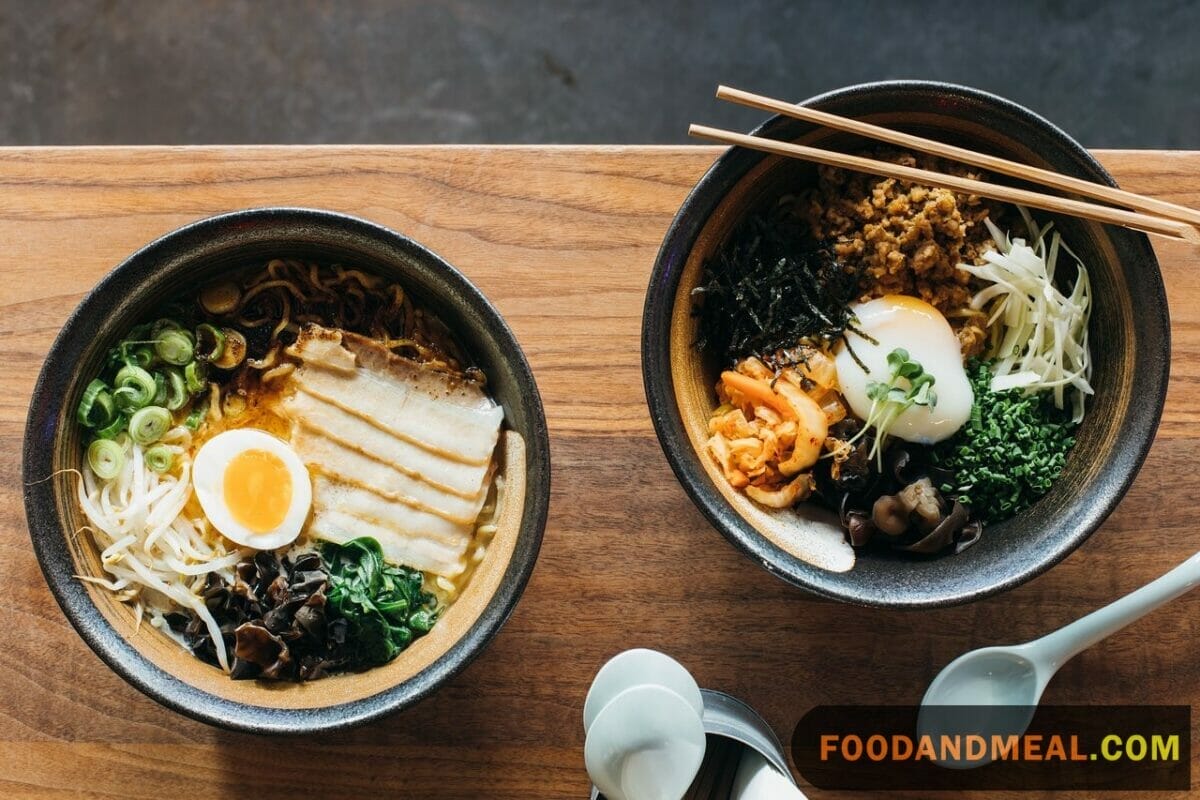
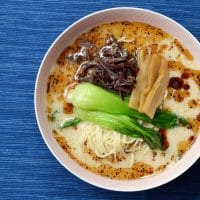
Mayu ( Black Garlic OIl ) Tonkotsu Ramen
Equipment
Ingredients
- ½ cup Shoyu Tare
- 5 cups Tonkotsu Creamy Soup
- 1⅓ pounds noodles fresh, such as thin Chukasuimen
- 4 to 8 slices Pork Chashu
- 4 tablespoons garlic chips
- Negi
- 4 tablespoons Mayu
Instructions
- With all your ingredients ready to go, bring a large pot of water to a boil over medium-high heat.
- Heat your ramen bowls by filling them halfway with hot water. The bowls don’t need to be scalding, but they should be hot to the touch. Dump out the hot water and dry the bowls with some paper towels or a clean towel.
- Put the tare and soup in a medium saucepan. Mix and bring to a simmer over low heat.
- Cook the noodles in the large pot of boiling water. Ramen that has been cut to a standard thickness (about 1 mm) will cook in 1 to 2 minutes.
- About 30 seconds before the noodles are finished cooking, ladle the soup into the ramen bowls.
- Drain the noodles, taking care to shake off as much excess water as you can. Carefully place some noodles in each bowl of soup, keeping them tidy.
- Place 1 or 2 slices of chashu, 1 tablespoon of garlic chips, and a sprinkle of negi neatly on the ramen. Drizzle 1 tablespoon of mayu over each bowl. Serve immediately.
Video
Notes
Nutrition
© Food And Meal
This website provides approximate nutrition information for convenience and as a courtesy only. Nutrition data is gathered primarily from the Spoonacular Database, whenever available, or otherwise other online calculators.
Alternative Method: Slow Cooker Mayu Tonkotsu Ramen
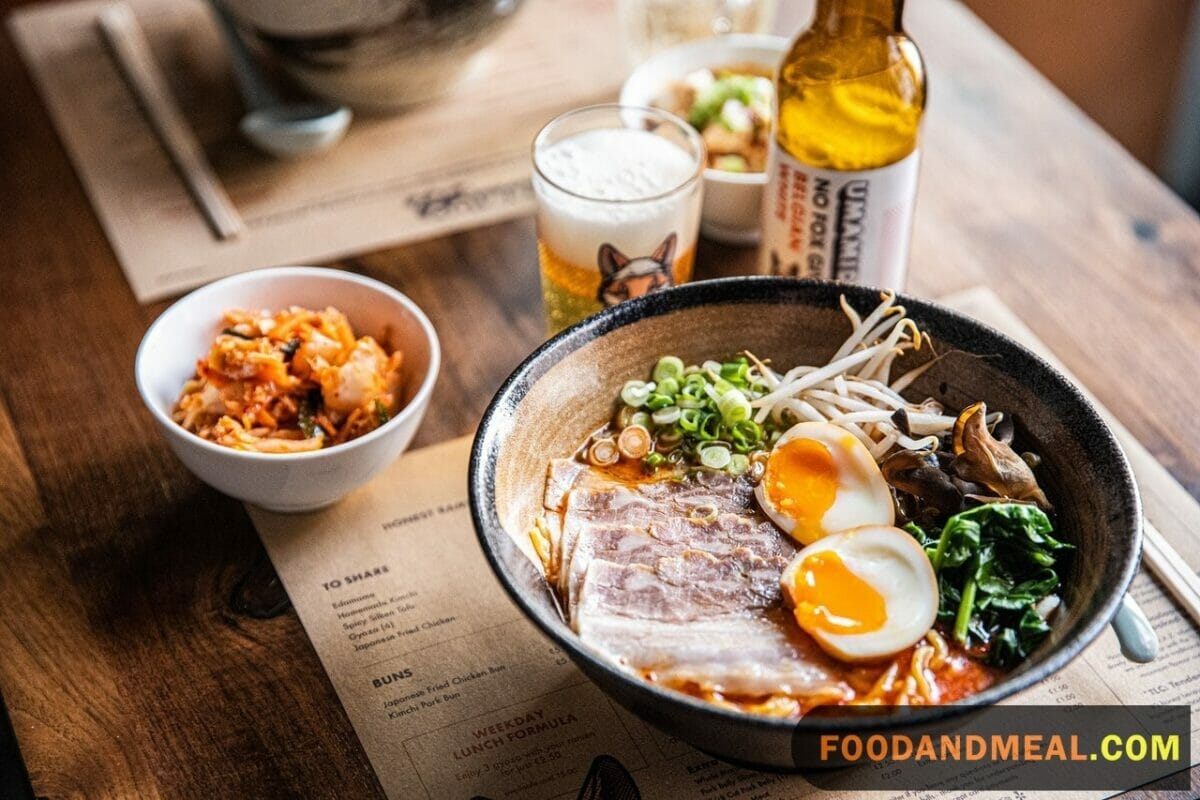
Ingredients:
- 2 pounds pork neck bones
- 1 pound pork belly, sliced
- 8 cloves garlic, crushed
- 2 shallots, sliced
- 2 tablespoons vegetable oil
- 1-inch piece of ginger, sliced
- 1 leek, chopped
- 8 cups water
- 1 cup soy milk
- 2 tablespoons mayu (black garlic oil)
- 1 tablespoon soy sauce
- 1 tablespoon fish sauce
- Salt, to taste
- 1 pound fresh ramen noodles
- Toppings of your choice (soft-boiled eggs, green onions, bamboo shoots, nori, etc.)
Instructions:
- Sear the Pork Belly: Heat the vegetable oil in a skillet over high heat. Sear the pork belly slices until they develop a nice golden-brown color. Remove and set aside.
- Prepare the Slow Cooker: Place the seared pork belly, pork neck bones, crushed garlic, sliced shallots, ginger, and chopped leek into your slow cooker.
- Slow Cook the Broth: Pour 8 cups of water over the ingredients in the slow cooker. Cover and cook on low for 10-12 hours. This slow and low cooking process will extract all the rich flavors from the bones and create a creamy broth.
- Strain the Broth: After the slow cooking is complete, carefully strain the broth into a large pot or bowl, discarding the solids. You should be left with a flavorful, cloudy broth.
- Simmer the Broth: Return the strained broth to the slow cooker and set it to the “Keep Warm” setting. Stir in the soy milk, soy sauce, and fish sauce. Allow the broth to simmer gently while you prepare the toppings and noodles.
- Prepare the Noodles: Cook the fresh ramen noodles according to the package instructions. Drain and set aside.
- Assemble Your Ramen: In each serving bowl, add a tablespoon of mayu (black garlic oil) at the bottom. Ladle the hot broth over the oil. Place the cooked ramen noodles in the broth.
- Add Toppings: Arrange your desired toppings on the noodles. Common toppings include slices of the seared pork belly, soft-boiled eggs, sliced green onions, bamboo shoots, and nori.
- Serve and Enjoy: Serve your Slow Cooker Mayu Tonkotsu Ramen piping hot. Encourage everyone to mix the mayu with the broth for an extra depth of flavor. Enjoy this rich and comforting bowl of ramen!
Tips for making Mayu Tonkotsu Ramen
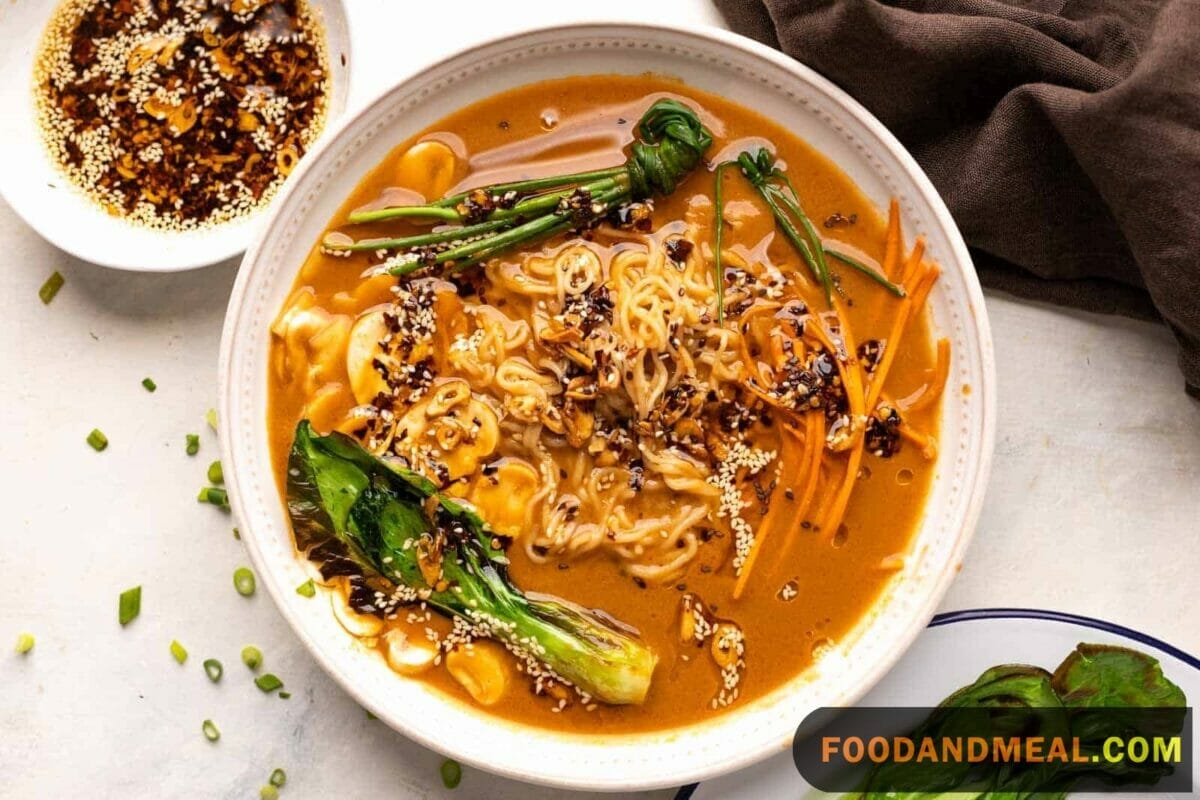
Cooking Tips
- Use Fresh Noodles: If possible, opt for fresh ramen noodles instead of dried ones. They have a superior texture and absorb the broth beautifully.
- Low and Slow Cooking: When making the broth, patience is key. Slow cooking the pork bones on a low heat setting ensures a rich, creamy, and flavorful result.
- Skim the Broth: While simmering the broth, skim off any impurities that rise to the surface. This keeps the broth clean and enhances its clarity.
- Don’t Overcook the Pork Belly: When searing the pork belly, be mindful not to overcook it. You want it to be tender, not crispy.
- Customize Toppings: Feel free to customize your ramen with your favorite toppings. Soft-boiled eggs, green onions, nori (seaweed), bamboo shoots, and sesame seeds are all excellent choices.
Serving Suggestions

- Pair with Japanese Pickles (Tsukemono): Serve your ramen with a side of Japanese pickles. The contrasting flavors and textures complement the richness of the broth.
- Garnish with Beni Shoga: Beni shoga is pickled red ginger that adds a delightful pop of color and tangy flavor to your ramen. Sprinkle it on top.
- Sip on Green Tea: A hot cup of Japanese green tea, like sencha or genmaicha, pairs wonderfully with ramen. It refreshes your palate between bites.
- Serve in Traditional Ramen Bowls: Presentation matters. Consider serving your Mayu Tonkotsu Ramen in traditional ramen bowls to enhance the visual appeal.
- Create a Ramen Toppings Bar: For a fun gathering, set up a ramen toppings bar with various options like sliced scallions, bamboo shoots, nori, and sesame seeds. Let everyone customize their bowls.
- Enjoy with Miso Soup: A small bowl of miso soup on the side adds another layer of flavor to your meal. It’s a common accompaniment in Japanese dining.
Frequently Asked Questions about Mayu Tonkotsu Ramen
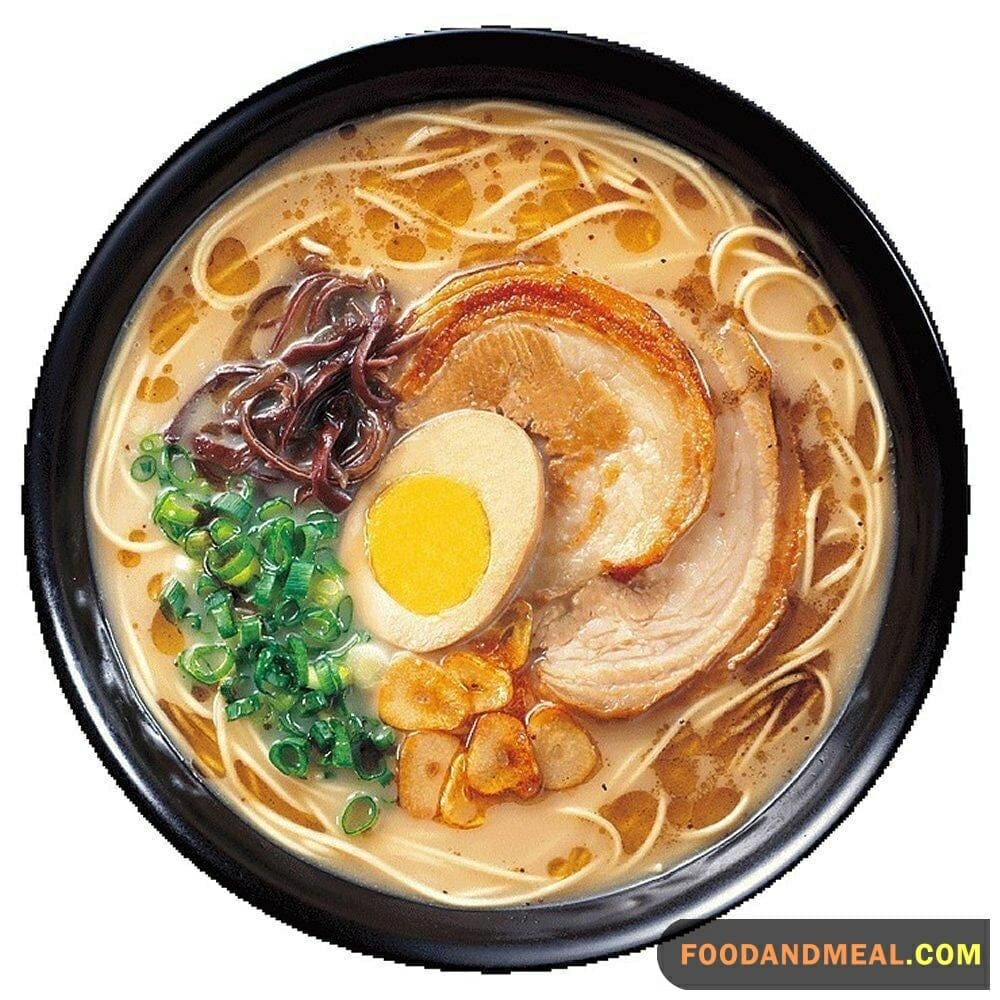
- Can I use chicken or beef instead of pork for the broth?While traditionally made with pork, you can experiment with chicken or beef bones for the broth. Keep in mind that the flavor profile will be different.
- How can I make the ramen spicier?To add heat, drizzle chili oil or sriracha sauce on top. You can also infuse the broth with chili flakes during cooking.
- What’s the best way to store leftover ramen?Store the broth and noodles separately. Place the broth in an airtight container in the refrigerator for up to 3 days. Noodles should be kept in a separate container to prevent them from becoming mushy. Reheat both gently on the stove or in the microwave.
- Can I make a vegetarian version of this ramen?Absolutely! Use vegetable broth, tofu, or mushrooms for a vegetarian-friendly alternative. Adjust the seasonings to taste.
- Is it possible to freeze the broth for later use?Yes, you can freeze the broth for up to 3 months. Allow it to cool completely before transferring it to a freezer-safe container. Thaw and reheat when ready to use.
Indulge in the flavors of Japan with our Mayu Tonkotsu Ramen recipe. Discover the art of crafting a velvety broth and elevate your dining experience. Subscribe and share for more culinary adventures.
I'm James F Anderson, a noted sous chef from London and a Le Cordon Bleu alumnus. My career began in a Michelin-starred Parisian eatery, where my blend of classic and contemporary cooking, using seasonal ingredients, earned accolades. Recognized in culinary publications and on cooking shows, I’m committed to mentoring aspiring chefs and delivering memorable dining experiences, marking me as a standout talent in the culinary world.


